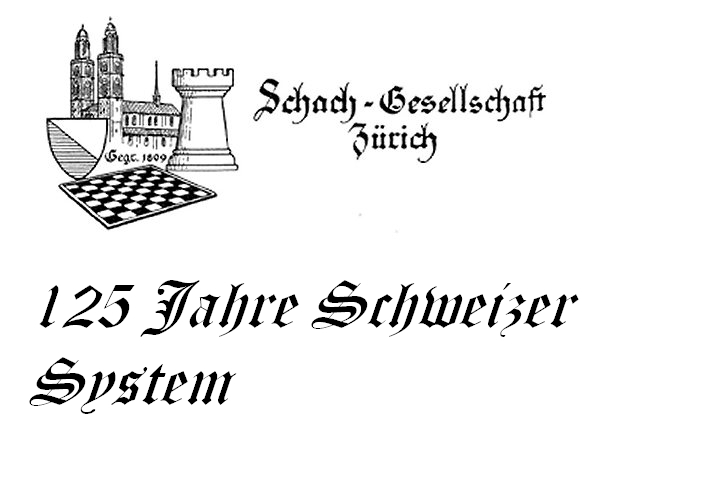


The Swiss system is a format for sporting events, which is used in tournaments with a large number of participants. In contrast to the knockout system, defeated players are not eliminated but stay in the tournament.
In Swiss tournaments players with the same number of points are paired against each other. Thus, in the course of the tournament the successful players play against each other – though no more than once – to fight for tournament victory.
Players should be paired against players with the same number of points but the colour with which they play should also alternate. That is, a player who had White in the first round should have Black in the second round and White again in round three. However, these two principles often clash and that is the reason why almost all tournaments are played with an odd numbers of rounds. Of course, now some players will have one more game with White, while others have one more game with Black. But this is easier to tolerate than having two more games with Black which can easily happen in tournaments with an even number of rounds. Nevertheless, there are traditional tournaments with an even number of rounds, e.g. the Open in Gibraltar.
But who invented or first tried this popular pairing system? As you probably guessed and as the name indicates, the Swiss invented it. Or, to be more precise, one Swiss did – Dr. Julius Müller, and therefore the system could also be called Müller-System. Most sources give June 15, 1895, as the birthday of the Swiss system, which is almost exactly 125 years ago.
At the end of the 19th century chess became more and more popular and more and more players wanted to take part in tournaments. The Swiss system was used to give all players the opportunity to play in tournaments and to give these tournaments a fixed schedule. The Swiss system is so clever and has been so successful that it is still used today and has become the standard for all amateur tournaments with many participants.
Dr. Julius Müller (1857-1917) was a teacher in Brugg, a community that is about 20 km away from Zurich. However, in their history of the Schachgesellschaft Zürich, which was founded in 1809 and is the world's oldest still existing chess club, Richard Forster and Christian Rohrer claim that Julius Müller already used his new pairing system – at least in a "beta version" – at the 1. Schweizerische Schachturnier, the First Swiss Chess Tournament, that was played on June 1 and 2, 1889. This seems quite plausible as 74 players took part in that tournament. But apparently Julius Müller improved his system over the years and today the 5. Schweizerische Schachturnier, the Fifth Swiss Tournament, is considered to be the birthplace of the Swiss system.
Incidentally, the Fifth Swiss Tournament was won by Max Pestalozzi, the organiser of the event and a distant relative of the well-known pedagogue Heinrich Pestalozzi. Place two went to Artur Poplawski from Poland.
125 years later the Swiss System, which was invented by chess players, is still extremely popular and is regularly used in other sports, often in slightly modified form.
Wikipedia entry "Swiss-system tournament"
Translation from German: Johannes Fischer